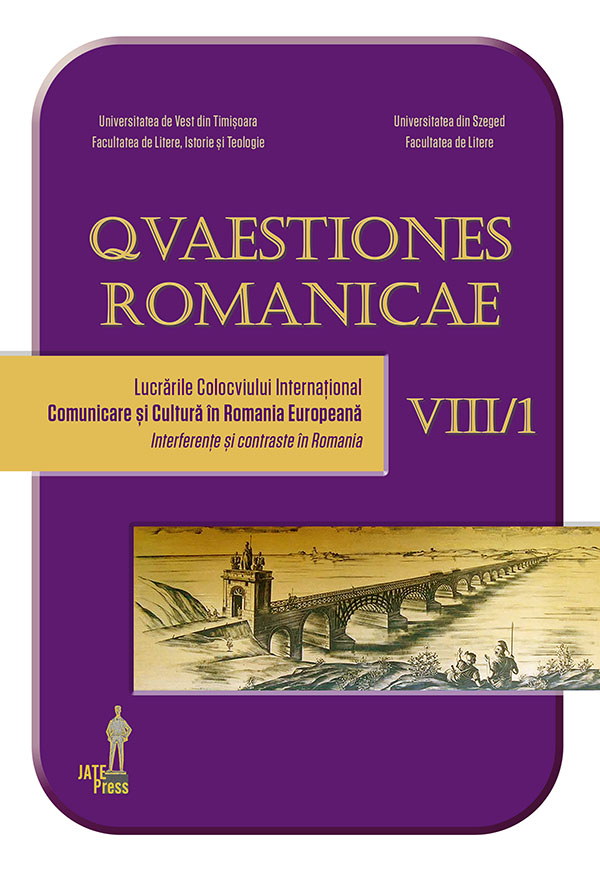Forme de copyright infringement în traducțiile pre limbă rumânească din veacul al XIX-lea
Abstract: (Forms of Copyright Infringement in Romanian Language Translations in the 19th Century) In a politically, socially and historically challenging context as the one that characterizes the 19th century, all actors involved in translation publishing seem to take liberties dictated by the desire to respond to the preferences or needs of the target readership: on the one hand, the translator towards the original author, the target audience and the editor (by choosing the texts to be translated) and on the other hand, the editor towards the author, the translator and the readers. Between 1800 and 1900, the absence of deontological norms and the quasi-sure existence of the notion of intellectual property in the Romanian Principalities are reflected not only in the laxism of the translational approaches but also in certain aspects of the paratextual apparatus accompanying the translations themselves. And if some of the translators are aware of the importance of their fully assumed role, the editorial behavior (from page layout and in(voluntary) omission of information to misspellings and renaming according to the Romanian graphy) betrays the negligence or the ignorance of the messengers of the cultural act. Our research focuses on a corpus of relevant paratexts that frame the main texts and are likely to provide valuable insights into how such meta-elements and meta-speeches have influenced, changed or altered the reception of the source text in the target culture. Therefore, at the dawn of the translation studies in Romania, our goal is to analyze if and how editorial decisions canceled, minimized or granted the right of the first author and that of the secondary author (the translator).
Keywords: intellectual property, paratext, nineteenth century, apocrypha, plagiarism, translation.
Rezumat: Într-un context politico-social și istoric tulbure precum cel care caracterizează secolul al XIX-lea, toți actanții implicați în publicarea traducerilor par să își ia libertăți dictate de dorința de a răspunde cât mai bine preferințelor ori nevoilor cititorului-țintă: pe de-o parte, traducătorul față de autorul originalului, de publicul țintă și de editor (prin alegerea textelor de tradus) iar de pe altă parte, editorul față de autor, traducător și cititori. În perioada 1800-1900, absența unor norme deontologice și cvasi inexistența noțiunii de proprietate intelectuală în Principatele Române se reflectă nu doar în laxismul abordărilor traductive ci și în anumite aspecte ale aparatului paratextual ce însoțește traducerile propriu-zise. Astfel, dacă unii traducători sau unele traducătoare erau conștienți/conștiente de importanța rolului pe deplin asumat, nu puține sunt situațiile în care comportamentul editorial (de la așezare în pagină și omiteri (in)voluntare de informații până la greșeli de ortografie și românizări) trădează fie neglijența, fie ignoranța mesagerilor actului cultural. Cercetarea noastră se axează pe un corpus de câteva zeci de paratexte care încadrează textele principale și care sunt susceptibile de a oferi indicii prețioase cu privire la modul în care aceste meta-elemente și meta-discursuri au influențat, modificat sau alterat receptarea unui text sursă în cultura țintă. Ne propunem, așadar, să analizăm, în zorii traductologiei românești, dacă și în ce fel deciziile editoriale au anulat, au minimizat sau, dimpotrivă, au acordat locul cuvenit autorului prim și, mai apoi, autorului secundar (traducătorului).
Cuvinte-cheie: proprietate intelectuală, paratext, secolul al XIX-lea, apocrife, plagiat, traducere.
